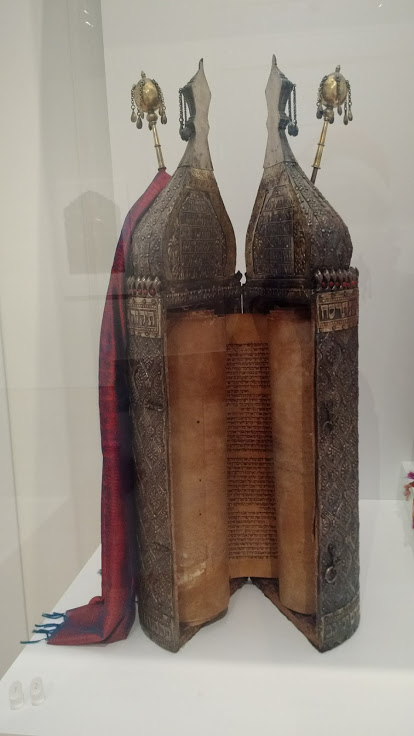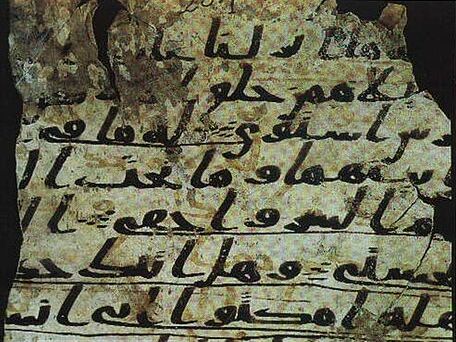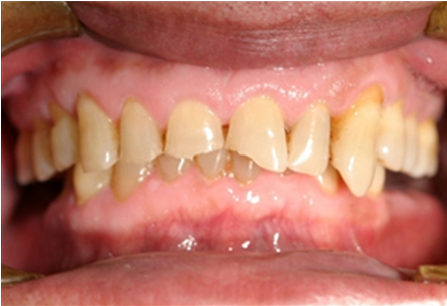|
Origin And Development Of The Quran
The history of the Quran, the holy book of Islam, is the timeline ranging from the inception of the Quran during the lifetime of Muhammad (believed to have received the Quran through revelation between 610 and 632 CE), to the emergence, transmission, and canonization of its written copies. The history of the Quran is a major focus in the field of Quranic studies. In Sunni tradition, it is believed that the first caliph Abu Bakr ordered Zayd ibn Thabit to compile the written Quran, relying upon both textual fragments and the memories of those who had memorized it during Muhammad's lifetime, with the ''rasm'' (undotted Arabic text) being officially canonized under the third caliph Uthman ibn Affan ( r. 644–656 CE), leading the Quran as it exists today to be known as the Uthmanic codex. Some Shia Muslims believe that the fourth caliph Ali ibn Abi Talib was the first to compile the Quran shortly after Muhammad died. The canonization process is believed to have been highly conse ... [...More Info...] [...Related Items...] OR: [Wikipedia] [Google] [Baidu] |
Islamic Holy Books
Islamic holy books are certain religious scriptures that are viewed by Muslims as having valid divine significance, in that they were authored by God (Allah) through a variety of prophets and messengers, including those who predate the Quran. Among the group of religious texts considered to be valid revelations, the three that are mentioned by name in the Quran are the Tawrat (Arabic for Torah), received by prophets and messengers amongst the Israelites; the Zabur (Psalms), received by David; and the Injeel (Arabic for the Gospel), received by Jesus. Additionally, the Quran mentions God's revealing of the Scrolls of Abraham and the Scrolls of Moses. Muslims hold the Quran, as it was revealed to Muhammad, to be God's final revelation to mankind, and therefore a completion and confirmation of previous scriptures, such as the Bible. Despite the primacy that Muslims place upon the Quran in this context, belief in the validity of earlier Abrahamic scriptures is one of the six Isl ... [...More Info...] [...Related Items...] OR: [Wikipedia] [Google] [Baidu] |
Sanaa Manuscript
The Sanaa palimpsest (also Ṣanʽā’ 1 or DAM 01-27.1) or Sanaa Quran is one of the oldest Quranic manuscripts in existence. Part of a sizable cache of Quranic and non-Quranic fragments discovered in Yemen Yemen, officially the Republic of Yemen, is a country in West Asia. Located in South Arabia, southern Arabia, it borders Saudi Arabia to Saudi Arabia–Yemen border, the north, Oman to Oman–Yemen border, the northeast, the south-eastern part ... during a 1972 restoration of the Great Mosque of Sanaa, the manuscript was identified as a palimpsest Quran in 1981 as it is written on parchment and comprises two layers of text. * The upper text entirely conforms to the standard Abd Allah ibn Mas'ud#Uthman's Compilation of Qur'an, Uthmanic Quran in text and in the standard order of surahs (chapters). * The lower text, which was erased and written over by the upper text, but can still be read with the help of ultraviolet light and computer processing, contains many variati ... [...More Info...] [...Related Items...] OR: [Wikipedia] [Google] [Baidu] |
Muhammad Al-Idrisi
Abu Abdullah Muhammad al-Idrisi al-Qurtubi al-Hasani as-Sabti, or simply al-Idrisi (; ; 1100–1165), was an Arab Muslim geographer and cartographer who served in the court of King Roger II at Palermo, Sicily. Muhammad al-Idrisi was born in Ceuta, then belonging to the Almoravid dynasty. He created the , one of the most advanced medieval world maps. Early life Al-Idrisi hailed from the Hammudid dynasty of North Africa and Al-Andalus, which was descended from Muhammad through the powerful Idrisid dynasty. Al-Idrisi was believed to be born the city of Ceuta in 1100, at the time controlled by the Almoravids, where his great-grandfather had been forced to settle after the fall of Hammudid Málaga to the Zirids of Granada. He spent much of his early life travelling through North Africa and Al-Andalus (Muslim Spain and Portugal of the times) and seems to have acquired detailed information on both regions. He visited Anatolia when he was barely 16. He studied in the universit ... [...More Info...] [...Related Items...] OR: [Wikipedia] [Google] [Baidu] |
Nasir Khusraw
Nasir Khusraw (; 1004 – between 1072–1088) was an Isma'ili poet, philosopher, traveler, and missionary () for the Isma'ili Fatimid Caliphate. Despite being one of the most prominent Isma'ili philosophers and theologians of the Fatimids and the writer of many philosophical works intended for only the inner circle of the Isma'ili community, Nasir is best known to the general public as a poet and writer who ardently supported his native Persian tongue as an artistic and scientific language. All of Nasir's philosophical Isma'ili works are in Persian, a rarity in the Isma'ili literature of the Fatimids, which primarily used Arabic. Nasir was a key figure in the spread of Isma'ilism in Central Asia. He is with great reverence called "Pir" or "Shah Sayyid Nasir" by the Isma'ili community of Badakhshan (split between Afghanistan and Tajikistan) and their branches in northern Pakistan, who all consider him to be their founder. Name Nasir Khusraw's full name was Abu Mu'in Hamid a ... [...More Info...] [...Related Items...] OR: [Wikipedia] [Google] [Baidu] |
Al-Muqaddasi
Shams al-Din Abu Abd Allah Muhammad ibn Ahmad ibn Abi Bakr, commonly known by the '' nisba'' al-Maqdisi or al-Muqaddasī, was a medieval Arab geographer, author of ''The Best Divisions in the Knowledge of the Regions'' and ''Description of Syria (Including Palestine)''. Al-Maqdisi is one of the earliest known historical figures to self-identify as a Palestinian, having done so during one of his travels in Persia. Biography Sources Outside of his own work, there is little biographical information available about al-Maqdisi.Miquel 1993, p. 492. He is neither found in the voluminous biographies of Ibn Khallikan (d. 1282) nor were the aspects of his life mentioned in the works of his contemporaries.Al-Mukaddasi, ed. Le Strange 1886, piii/ref> Early life and education He was born in Jerusalem in and belonged to a middle-class family whose roots in the city's environs dated from the period approximate to the 7th-century Muslim conquest.Le Strange 1890, pp56/ref> According to his ... [...More Info...] [...Related Items...] OR: [Wikipedia] [Google] [Baidu] |
Al-Aksa
Al-Aqsa (; ) or al-Masjid al-Aqṣā () and also is the compound of Islamic religious buildings that sit atop the Temple Mount, also known as the Haram al-Sharif, in the Old City (Jerusalem), Old City of Jerusalem, including the Dome of the Rock, many mosques and prayer halls, madrasas, zawiya (prayer space), zawiyas, khalwa (structure), khalwas and other domes and religious structures, as well as the four encircling Minarets of the Al-Aqsa Mosque compound, minarets. It is considered the third Holiest sites in Islam, holiest site in Islam. The compound's main congregational mosque or Musalla, prayer hall is variously known as ''Al-Aqsa Mosque'', ''Qibli Mosque'' or ''al-Jāmiʿ al-Aqṣā'', while in some sources it is also known as ''al-Masjid al-Aqṣā''; the wider compound is sometimes known as Al-Aqsa Mosque compound in order to avoid confusion. During the rule of the Rashidun caliph Umar () or the Umayyad caliph Mu'awiya I (), a small prayer house on the compound was ere ... [...More Info...] [...Related Items...] OR: [Wikipedia] [Google] [Baidu] |
Al-Hajjaj Ibn Yusuf
Abu Muhammad al-Hajjaj ibn Yusuf ibn al-Hakam ibn Abi Aqil al-Thaqafi (; ), known simply as al-Hajjaj ibn Yusuf (), was the most notable governor who served the Umayyad Caliphate. He began his service under Caliph Abd al-Malik (), who successively promoted him as the head of the Caliph's (select troops), the governor of the Hejaz (western Arabia) in 692–694, and the practical viceroy of a unified Iraqi province and the eastern parts of the Caliphate in 694. Al-Hajjaj retained the last post under Abd al-Malik's son and successor al-Walid I (), whose decision-making was heavily influenced by al-Hajjaj, until his death in 714. As governor of Iraq and the east, al-Hajjaj instituted key reforms. Among these were the minting of silver dirhams with strictly Muslim religious formulas instead of the coins' traditional, pre-Islamic Sasanian design; changing the language of the (tax registers) of Iraq from Persian to Arabic; and the introduction of a uniform version of the Quran. To r ... [...More Info...] [...Related Items...] OR: [Wikipedia] [Google] [Baidu] |
Masjid Al-Haram
Masjid al-Haram (), also known as the Sacred Mosque or the Great Mosque of Mecca, is considered to be the most significant mosque in Islam. It encloses the vicinity of the Kaaba in Mecca, in the Mecca Province of Saudi Arabia. It is among the pilgrimage sites associated with the Hajj, which every Muslim must perform at least once in their lives if able. It is also the main site for the performance of ʿUmrah, the lesser pilgrimage that can be undertaken any time of the year. The rites of both pilgrimages include circumambulating the Kaaba within the mosque. The Great Mosque includes other important significant sites, such as the Black Stone, the Zamzam Well, Maqam Ibrahim, and the hills of Safa and Marwa. the Great Mosque is both the largest mosque in the world, and the most expensive building in the world. It has undergone major renovations and expansions through the years. It has passed through the control of various caliphs, sultans and kings, and is now under the ... [...More Info...] [...Related Items...] OR: [Wikipedia] [Google] [Baidu] |
The Atlantic
''The Atlantic'' is an American magazine and multi-platform publisher based in Washington, D.C. It features articles on politics, foreign affairs, business and the economy, culture and the arts, technology, and science. It was founded in 1857 in Boston as ''The Atlantic Monthly'', a literary and cultural magazine that published leading writers' commentary on education, the abolition of slavery, and other major political issues of that time. Its founders included Francis H. Underwood and prominent writers Ralph Waldo Emerson, Oliver Wendell Holmes Sr., Henry Wadsworth Longfellow, Harriet Beecher Stowe, and John Greenleaf Whittier. James Russell Lowell was its first editor. During the 19th and 20th centuries, the magazine also published the annual ''The Atlantic Monthly Almanac''. The magazine was purchased in 1999 by businessman David G. Bradley, who fashioned it into a general editorial magazine primarily aimed at serious national readers and " thought leaders"; in 201 ... [...More Info...] [...Related Items...] OR: [Wikipedia] [Google] [Baidu] |
Saarbrücken
Saarbrücken (; Rhenish Franconian: ''Sabrigge'' ; ; ; ; ) is the capital and largest List of cities and towns in Germany, city of the state of Saarland, Germany. Saarbrücken has 181,959 inhabitants and is Saarland's administrative, commercial and cultural centre. It is located on the Saar River (a tributary of the Moselle), directly borders the French department of Moselle (department), Moselle, and is Germany's second-westernmost state capital after Düsseldorf. The modern city of Saarbrücken was created in 1909 by the merger of the three cities of Saarbrücken (now called ''Alt-Saarbrücken''), Sankt Johann (Saarbrücken), St. Johann a. d. Saar, and Malstatt-Burbach. It was the industrial and transport centre of the Saar coal basin. Products included iron and steel, sugar, beer, pottery, optical instruments, machinery, and construction materials. Historic landmarks in the city include the stone bridge across the Saar (river), Saar (1546), the Gothic church of St. Ar ... [...More Info...] [...Related Items...] OR: [Wikipedia] [Google] [Baidu] |
Saarland University
Saarland University (, ) is a public research university located in Saarbrücken, the capital of the German state of Saarland. It was founded in 1948 in Homburg in co-operation with France and is organized in six faculties that cover all major fields of science. In 2007, the university was recognized as an excellence center for computer science in Germany. Thanks to bilingual German and French staff, the university has an international profile, which has been underlined by its proclamation as "''European University''" in 1950 and by establishment of Europa-Institut as its "''crown and symbol''" in 1951. Nine academics have been honored with the highest German research prize, the Gottfried Wilhelm Leibniz Prize, while working at Saarland University. History Saarland University, the first to be established after World War II, was founded in November 1948 with the support of the French Government and under the auspices of the University of Nancy. At the time the Saarland ... [...More Info...] [...Related Items...] OR: [Wikipedia] [Google] [Baidu] |
Gerd R
Gastroesophageal reflux disease (GERD) or gastro-oesophageal reflux disease (GORD) is a chronic upper gastrointestinal disease in which stomach content persistently and regularly flows up into the esophagus, resulting in symptoms and/or complications. Symptoms include dental corrosion, dysphagia, heartburn, odynophagia, regurgitation, non-cardiac chest pain, extraesophageal symptoms such as chronic cough, hoarseness, reflux-induced laryngitis, or asthma. In the long term, and when not treated, complications such as esophagitis, esophageal stricture, and Barrett's esophagus may arise. Risk factors include obesity, pregnancy, smoking, hiatal hernia, and taking certain medications. Medications that may cause or worsen the disease include benzodiazepines, calcium channel blockers, tricyclic antidepressants, NSAIDs, and certain asthma medicines. Acid reflux is due to poor closure of the lower esophageal sphincter, which is at the junction between the stomach and the esophag ... [...More Info...] [...Related Items...] OR: [Wikipedia] [Google] [Baidu] |







